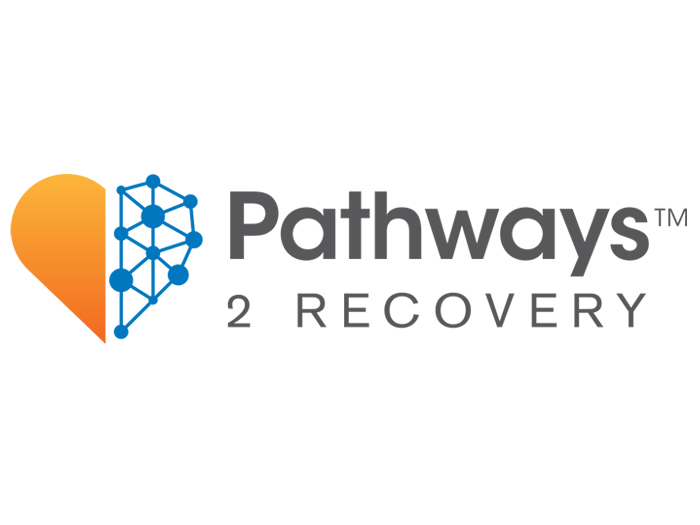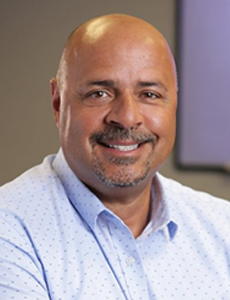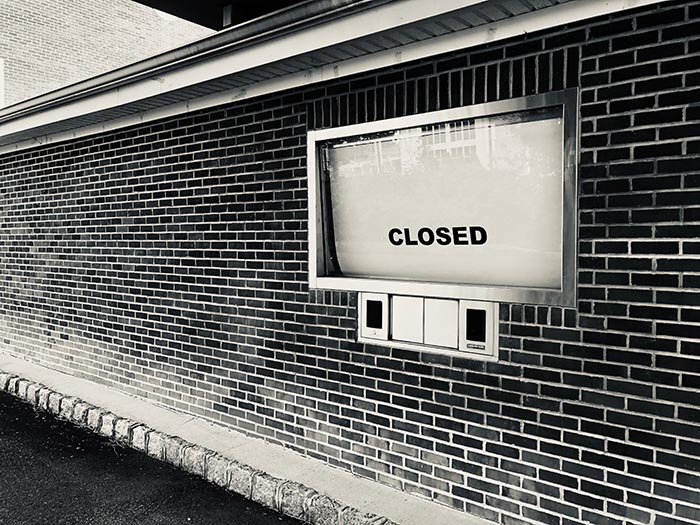Sponsored: Carisk Partners
The Worst Injuries Demand an Integrated Pathway 2 Recovery. Here’s What That Looks Like.

No injury exists in a vacuum, and recovery is never just a matter of healing a broken body part. Because physical health is inextricably linked with mental health, getting better requires attention to both.
Unfortunately, the traditional workers’ compensation paradigm is built on treating compensable injuries and only compensable injuries
“I’ve literally heard a claim professional say, ‘We only bought the knee injury. We didn’t buy the whole person,’” said Joseph Berardo, Jr., Chief Executive Officer, Carisk Partners. “The good news is the industry is starting to recognize that that knee is attached to a person. But I would argue that there are very few programs that truly encompass biopsychosocial treatment.”
An interdisciplinary approach to treatment places the person at the center of the plan, considering every physical, emotional, social and environmental factor that could impair or enable a faster recovery.
This treatment approach is especially critical for the most difficult claims in workers’ comp — those involving catastrophic injuries, opioid dependence, or those that have veered off-course and have not reached maximal recovery.
“According to the 2016 Workers’ Compensation Benchmarking Study, the number one barrier to recovery in worker’s comp cases is due to psychosocial factors,” said Alana Letourneau, M.D., MBA, Senior Vice President of Clinical Strategy, Carisk Partners. “We need to focus on the bidirectional relationship between mental and physical health and the integration of those clinical care pathways.”
Carisk’s history as an organization exemplifies its dedication to a patient-centered approach. It began first as a behavioral health company, accredited by both the National Committee for Quality Assurance and the Accreditation Association for Ambulatory Health Care.
“Having come out of managed care for the better part of 30 years, I knew it would be easier to integrate and assimilate the medical/surgical trauma expertise into a culture of behavioral health than vice versa,” Berardo said.
Carisk’s proprietary approach to managing acute catastrophic and complex workers’ comp cases – dubbed Pathways 2 Recovery – is structured around evidence-based clinical pathways for both physical and behavioral treatment.
The success of this integrated approach hinges on seven key elements:
1. A Multidisciplinary Internal Care Team

Alana Letourneau, M.D., MBA, Senior Vice President of Clinical Strategy, Carisk Partners
An in-house team of clinical professionals is assembled and assigned for each new case, matching areas of expertise with a patient’s specific needs and risk factors.
“In addition to quality clinical and medical resources addressing the injury, we have behavioral health experts with decades of experience in severe addiction, trauma, licensed clinical social work, vocational rehab and case management,” Letourneau said. “We have built a national network of medical and behavioral health specialty providers, which we can access based on the complexities of a particular case.”
For instance, if an injured worker has a history of trauma, he or she will be matched with a trauma trained clinician specialized in therapies such as eye movement desensitization and reprocessing therapy or traumatic incidence reduction. A social worker may be assigned to assess the support available for that worker at home and help him or her avoid the deleterious effects of social isolation.
Enlisting specialty expertise from day one ensures that critical risk factors are not overlooked Early identification and intervention for high risk individuals reduces the chance they will experience any delays in their recovery.
2. An Integrated Health Assessment

Joseph Berardo, Jr., Chief Executive Officer, Carisk Partners
A standard physical assessment might consider components such as pain and range of motion. In our experience, a more thorough evaluation is needed to gauge the psychological and social impacts of an injury. Carisk’s proprietary approach including a comprehensive biopsychosocial assessment addresses all three aspects to form a complete picture of the patient’s health.
“This comprehensive clinical interview organized as a discussion, was developed using evidence-based practices and standardized clinical tools, both in the realms of medical and psychosocial assessments,” Berardo said. “It’s detailed, in-depth and could take up to two hours to complete.”
“From a medical perspective we’re seeking a comprehensive history. What treatment have they received so far? What medications are they taking? Do they have any pre-existing conditions?” Letourneau said. “The fact that they have a pre-existing history of diabetes may not initially seem relevant to the physical injury, but it may impact healing, as well as infection rates in that individual.”
Behavioral assessments likewise look for any psychiatric substance use or trauma. Previous traumatic experiences and current injuries are not mutually exclusive – they can amplify one another and inhibit recovery if left unaddressed. Social history, such as marital status, complicated family dynamics, financial stress, and transportation barriers may all factor into an integrated care plan.
3. Customized Care Plans
Information collected from the assessment is aggregated into an individualized care coordination plan. In addition to outlining a projected course of treatment and therapies, the plan also addresses potential barriers and risks.
“We provide recommendations regarding risk mitigation strategies,” Letourneau said. “This is where Carisk’s foundation in behavioral health and multidisciplinary network provide value. One needs to understand past psychosocial history and environmental factors to identify what strategies will and will not work.”
Projected clinical and cost outcomes are also incorporated into the plan.
The inclusion of expected outcomes sets a clear finish line for a particular case and establishes a benchmark against which case managers can measure a patient’s progress. In other words, there’s a clear path forward to achieve the desired outcomes.
4. Provider Matching
Providing custom care goes beyond selecting the services that an injured worker might need. The specialist providing those services matters.
Discipline and level of expertise are important, but gender, culture, and language all come into play as well. To ensure patients feel comfortable with and trust their provider, these interpersonal factors must be considered.
A woman with a history of sexual abuse, for example, may feel more at ease with a female psychotherapist – especially one with a subspecialty in trauma.
“Because we have a national network, we can find the right person for the patient, wherever they are located,” Berardo said.
5. Use of Technology
The use of technology to foster regular communication among patients, caregivers and providers is critical to keep treatment on track and to evaluate an injured worker’s progress.
“We have partnered with a health technology company to develop a proprietary mobile app that allows for interaction between the injured worker, our case managers and providers. It’s completely customized for workers’ compensation injuries and the integration of both mental health and physical health,” Berardo said.
A secure, private chat function allows patients to talk to their care coordinator directly, while a group chat feature lets family members and providers stay in the loop.
The app tracks clinical assessment scores, appointment attendance and medication adherence, allowing case managers to spot potential problems before they arise. A library of educational materials is also available directly in the app at the fingertips of those who need it on demand.
“Our health tech partner studied the effectiveness of this care coordination mobile app. Research results published by the American Psychiatric Association showed significant clinical improvement in mental health assessment scoring through use of the app, when compared to traditional telephonic case management,” Letourneau said.
Given the nature of the injuries we are seeing, we have also identified partners offering technologies to meet the needs of patient population. For example, we are providing hands-free technology that is integrated with the mobile app for patients whose injuries have inhibited their ability to utilize mobile devices.
6. Data-Driven Insight
Information gathered from the patient’s medical records and the Carisk health assessments is fed into a system using Carisk’s claims data, as well as third party information like evidence-based guidelines.
“We have an exclusive partnership with a software developer to create this system specifically for us to meet the needs of our workers compensation clients. It integrates all the behavioral, clinical med/surg and social needs information, allowing risk scoring and capturing the details as patients move through the evaluation and treatment process,” Berardo said.
Comparing patient health data with commercial, workers’ comp and Medicare data helps the clinical team design an appropriate treatment plan cognizant of both clinical needs and cost. Each care coordination plan contains a research appendix citing the research, data and evidence-based practices to quantify future potential clinical risks.
Carisk’s underwriting process leans on the use of data, including a proprietary predictive database. This database consists of over $40 billion in paid claims and almost 300 insurance networks with diagnostic or procedural billing breakdown by zip code.
“That allows us to create a risk transfer pricing model, as well as outcomes projections for customers,” Berardo said.
7. Patient Engagement
Keeping patients motivated and fully engaged in their recovery process could well be the most important aspect of an integrated treatment approach. Coping with the repercussions of a catastrophic event is as emotionally impactful as the physical injury. Ensuring that resources and support are available both for an injured worker and his or her family is vital.
“Trust and rapport are the secret ingredients to a successful recovery,” Letourneau said. “Our patients will call us if they’re in the middle of a crisis or a family situation. They have a strong bond with our care coordinators and clinical team members.”
When all of these elements converge, they create a system that’s about more than just closing claims at the lowest cost. It’s a transformation in the way catastrophic and complex workers compensation injures are managed because the mind matters. Pathways 2 Recovery – though built on the pillars of science and data – keeps the focus on the patient traveling that pathway to improve the quality of care for some of the most challenging cases in the industry.
To learn more, visit https://www.cariskpartners.com/.
This article was produced by the R&I Brand Studio, a unit of the advertising department of Risk & Insurance, in collaboration with Carisk Partners. The editorial staff of Risk & Insurance had no role in its preparation.










